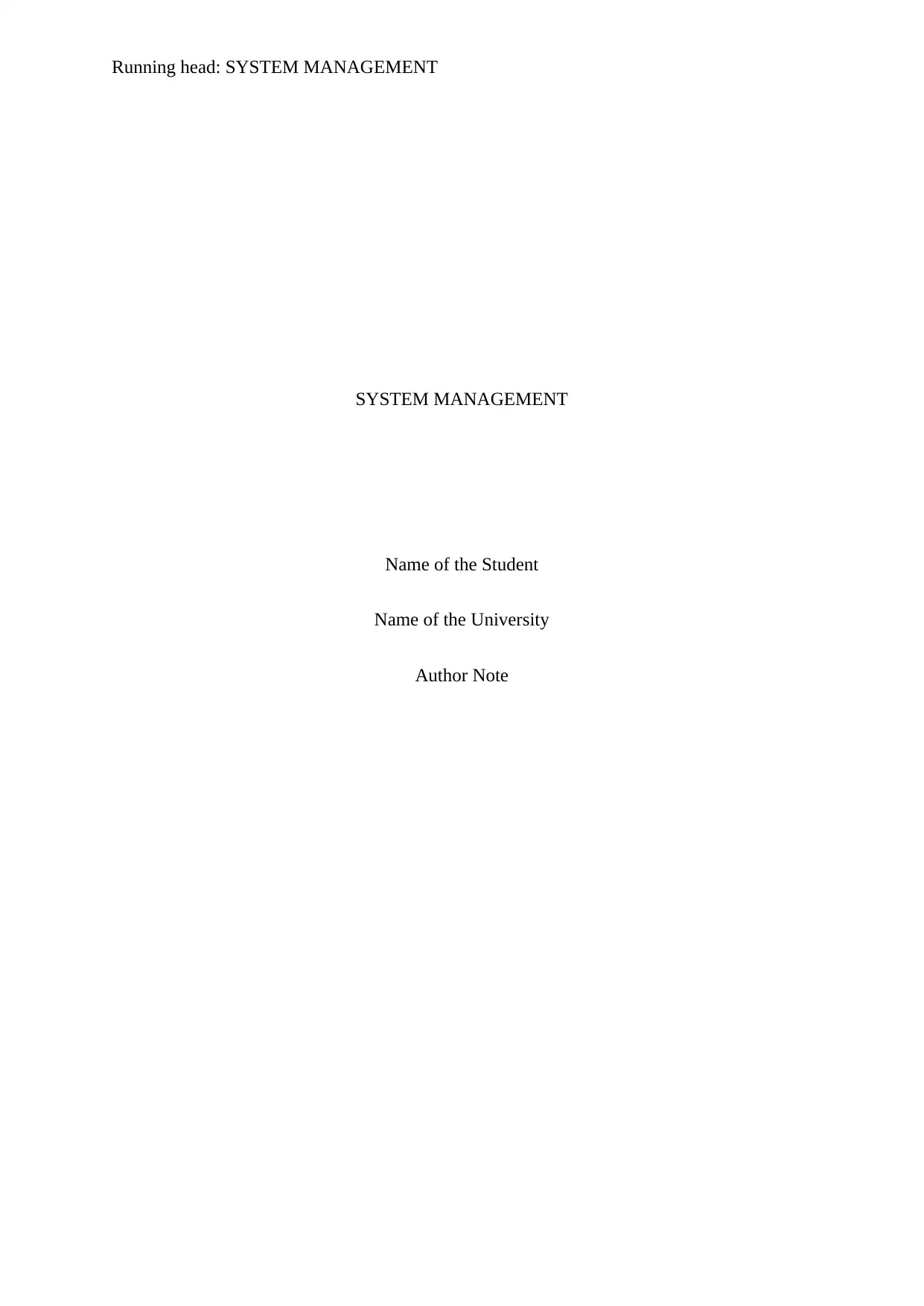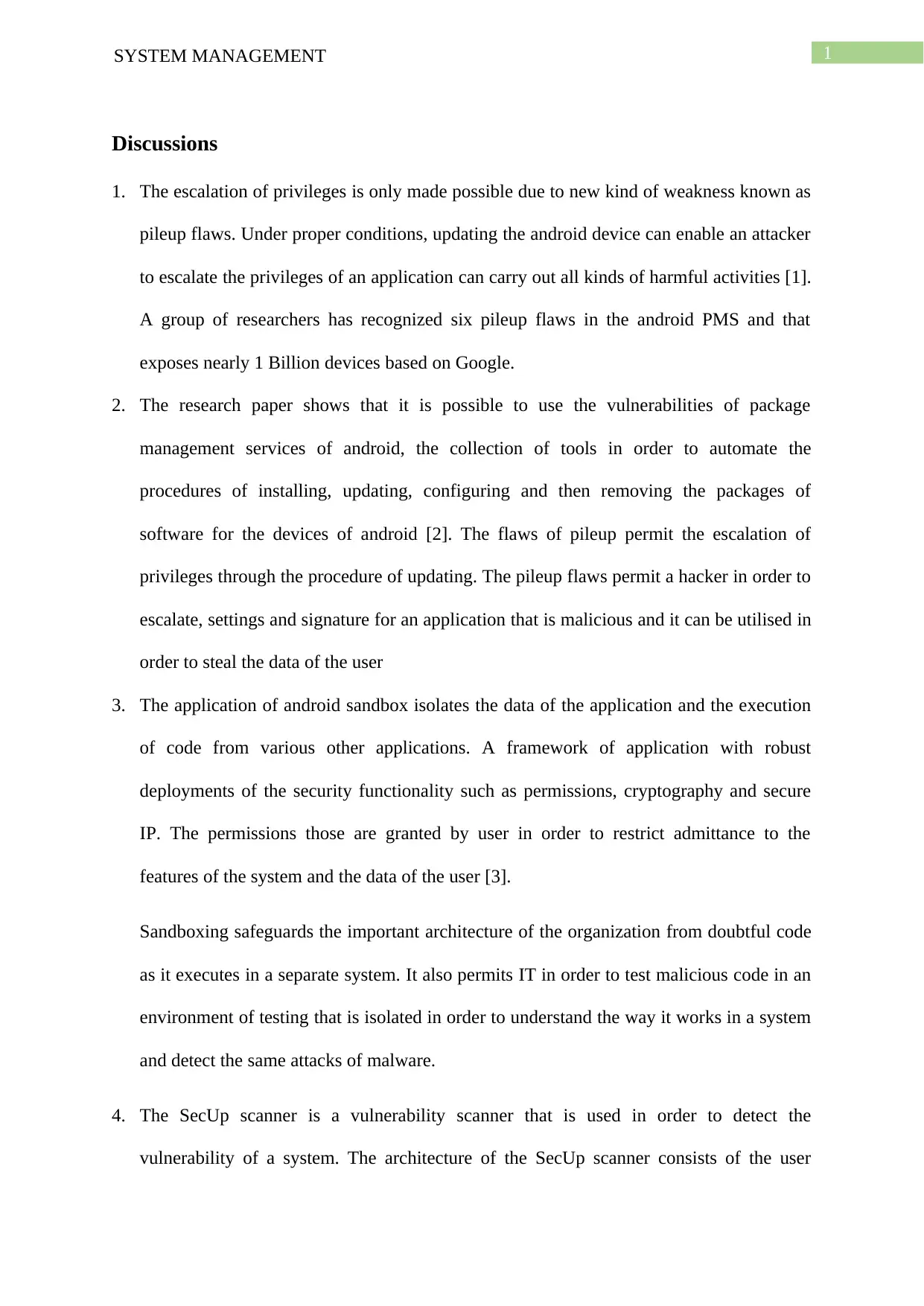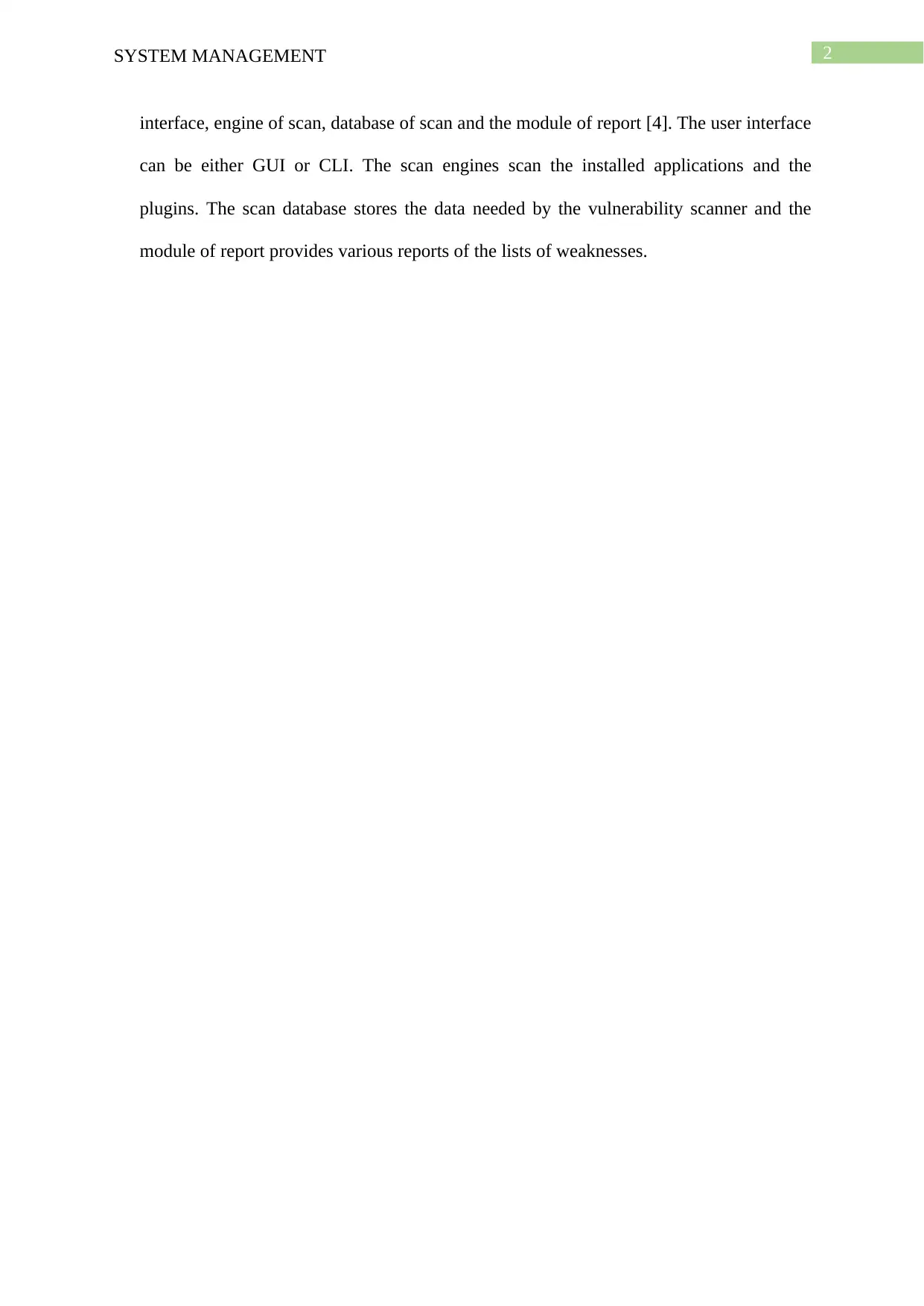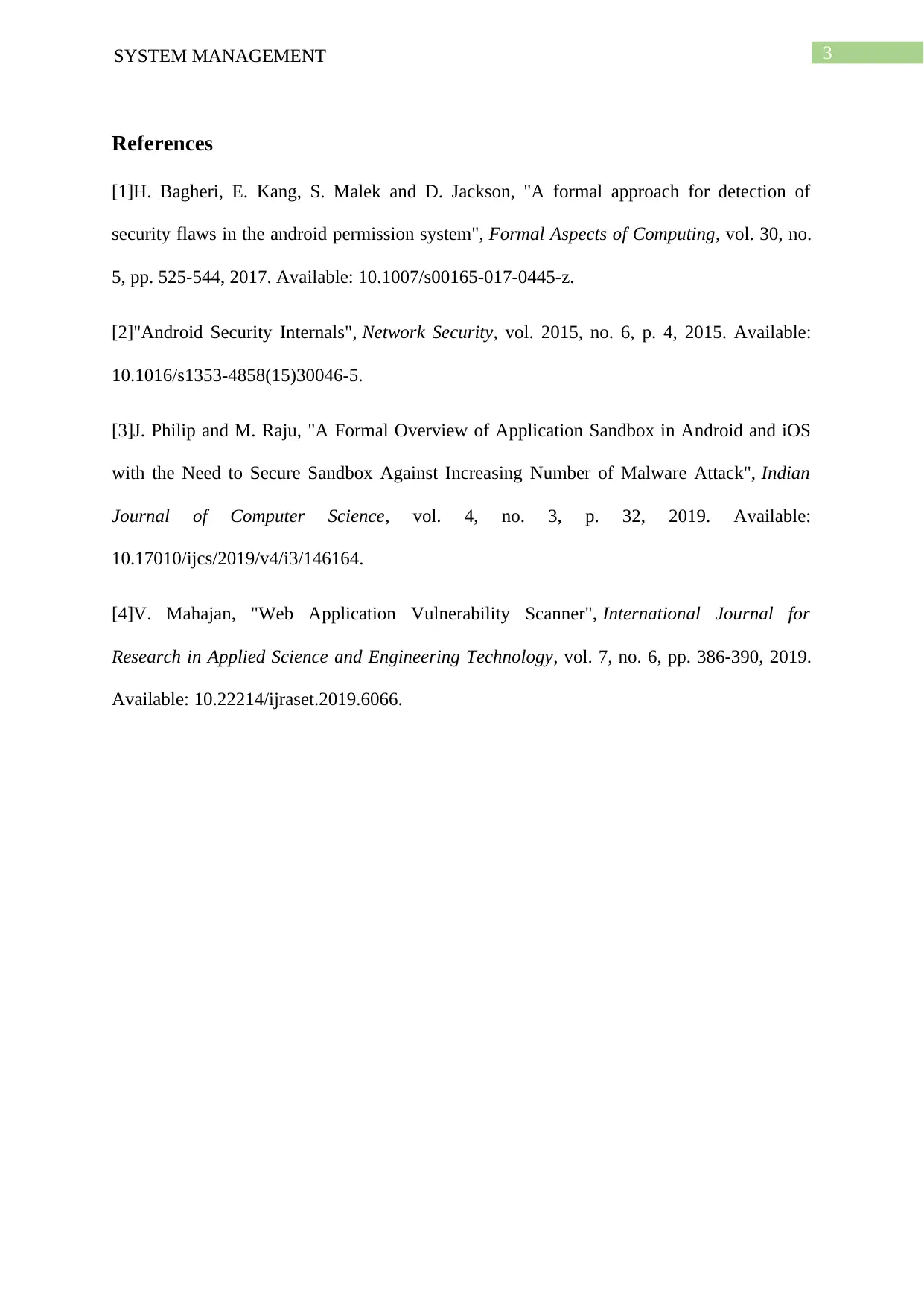MN506 System Management: Android Pileup Flaws and Security Analysis
VerifiedAdded on 2022/09/11
|4
|604
|25
Homework Assignment
AI Summary
This assignment analyzes the concept of pileup flaws in Android's Package Management Service (PMS). It discusses how these flaws can lead to privilege escalation, potentially allowing malicious applications to compromise device security. The document explains the functionality of the Android sandbox, which isolates application data and execution to enhance security. It also explores the role of the SecUp scanner, a vulnerability scanner used to detect system weaknesses, detailing its architecture and components. The assignment provides insights into the impact of pileup flaws, the benefits of sandboxing for software testing, and the architecture of security tools used to identify vulnerabilities in Android systems. The provided solution is designed to help students understand the concepts of system security in Android devices.
1 out of 4











![[object Object]](/_next/static/media/star-bottom.7253800d.svg)